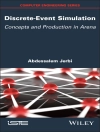This book presents an exciting new synthesis of directed and undirected, discrete and continuous graphical models. Combining elements of Bayesian networks and Markov random fields, the newly introduced hybrid random fields are an interesting approach to get the best of both these worlds, with an added promise of modularity and scalability. The authors have written an enjoyable book—rigorous in the treatment of the mathematical background, but also enlivened by interesting and original historical and philosophical perspectives.
— Manfred Jaeger, Aalborg Universitet
The book not only marks an effective direction of investigation with significant experimental advances, but it is also—and perhaps primarily—a guide for the reader through an original trip in the space of probabilistic modeling. While digesting the book, one is enriched with a very open view of the field, with full of stimulating connections. […] Everyone specifically interested in Bayesian networks and Markov random fields should not miss it.
— Marco Gori, Università degli Studi di Siena
Graphical models are sometimes regarded—incorrectly—as an impractical approach to machine learning, assuming that they only work well for low-dimensional applications and discrete-valued domains. While guiding the reader through the major achievements of this research area in a technically detailed yet accessible way, the book is concerned with the presentation and thorough (mathematical and experimental) investigation of a novel paradigm for probabilistic graphical modeling, the hybrid random field. This model subsumes and extends both Bayesian networks and Markov random fields. Moreover, it comes with well-defined learning algorithms, both for discrete and continuous-valued domains, which fit the needs of real-world applications involving large-scale, high-dimensional data.
विषयसूची
Introduction.-
Bayesian Networks.-
Markov Random Fields.-
Introducing Hybrid Random Fields:
Discrete-Valued Variables.-
Extending Hybrid Random Fields:
Continuous-Valued Variables.-
Applications.-
Probabilistic Graphical Models:
Cognitive Science or Cognitive Technology? ..-
Conclusions.











